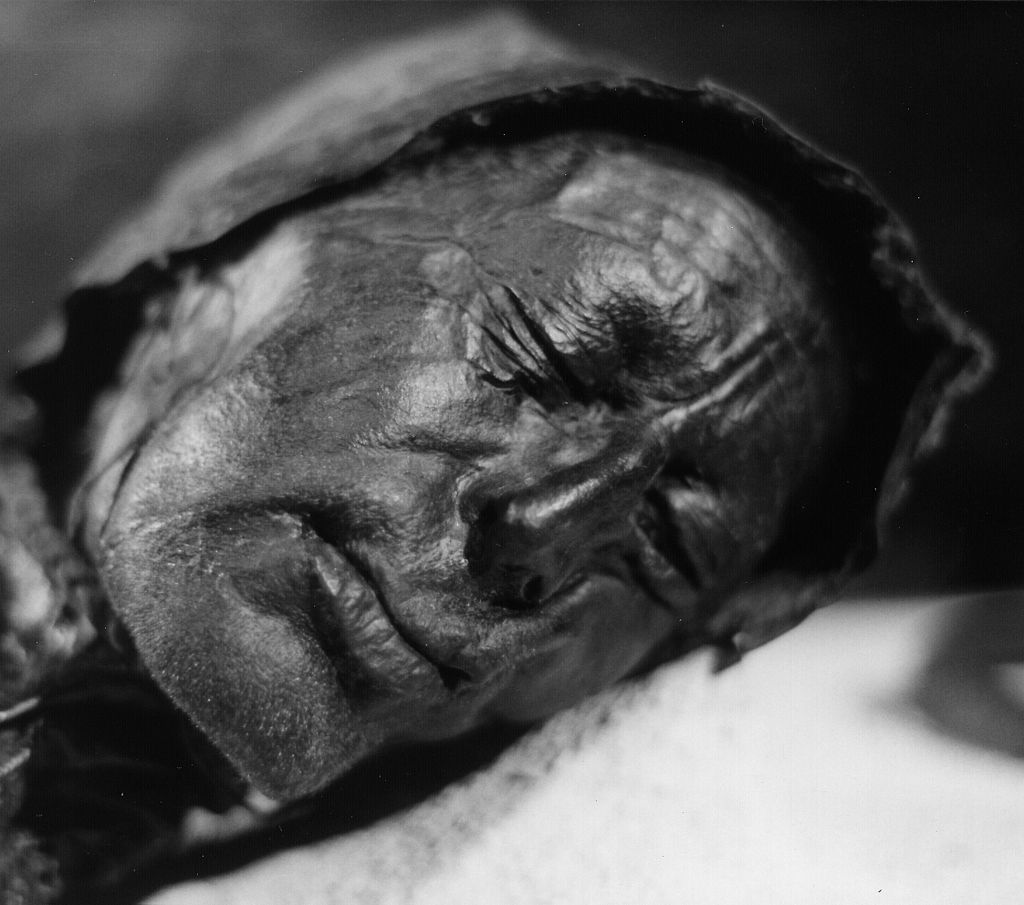A bog body is a human cadaver that has been naturally mummified in a peat bog. Such remains are geographically and chronologically widespread, dated to between 8000 BCE and the Second World War.[1] Unlike most ancient human remains, bog bodies often retain their skin and internal organs owing to the combination of highly acidic water, low temperature and a lack of oxygen. But the calcium phosphate in the bones is generally dissolved by the acid in the peat.[2]
The overwhelming majority of bog bodies date to the Iron Age, and have been found in northwest Europe, particularly Denmark, Germany, the Netherlands, the UK, Sweden, Poland, and Ireland.[3] Such Iron Age bog bodies typically share similarities such as a violent death and a lack of clothing, which has led archaeologists to believe that they were killed and deposited in the bogs as part of a widespread cultural tradition of human sacrifice, or executed as criminals.[1][4] More recent theories suggest that bog people were perceived as social outcasts or witches, as hostages killed in anger over broken treaty agreements, or as having suffered an unusual death and buried according to traditional customs.[4]
A significant number of finds consist of only body parts, making the actual number of bodies difficult to establish, but a study published in 1996 estimates that it is probably about 122; the most recent are those of soldiers killed in the wetlands of the Soviet Union during the Second World War.[1]
Bog chemistry
The preservation of bodies in peat bogs is a natural phenomenon,[1] resulting from the physical and biochemical composition of the environment. Different types of bogs can affect the mummification process differently; raised bogs best preserve the corpses, whereas fens and transitional bogs tend to preserve harder tissues such as the skeleton rather than the soft tissue.[5]
Preservation requires a sphagnum moss bog with a temperature lower than 4 ºC (39 ºF) when the body is deposited, and an average annual temperature less than 10 ºC (50 ºF), and be permanently wet. The best-preserved bodies have been found in colder bogs, particularly those closer to the sea.[6]
This article may contain text from Wikipedia, released under the Creative Commons Attribution-ShareAlike License.

